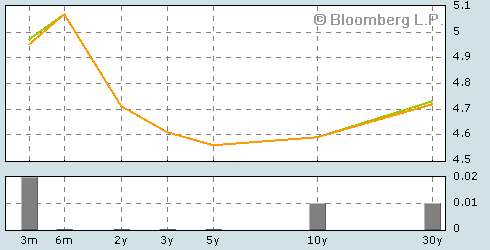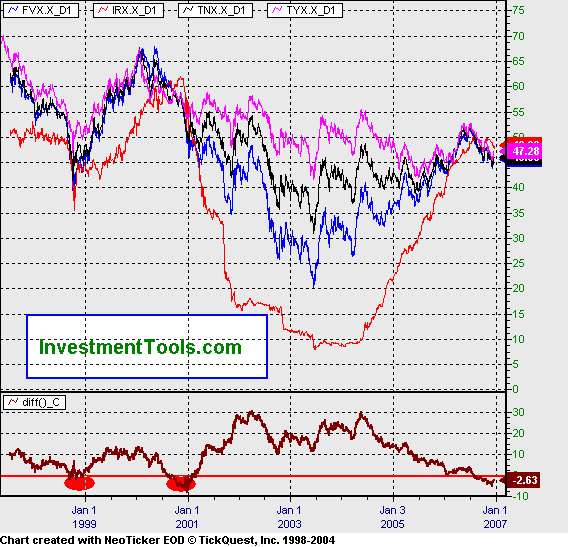Below is a chart of today's yield curve from about 12:15 EST. The chart is from Bloomberg.

That's a simple inversion -- meaning long-term rates are lower than short-term rates. This situation has gone on for a fairly-long time. Here is a chart from Investtools.com that shows various interest rates. Pay attention to the red line at the bottom half of the chart. It shows the inversion has gone on for a few months.

Less importantly -- but still noteworthy -- the yield difference between the 5-year Treasury and the Fed Funds rate. This has been negative for a few months as well.

Long rates are supposed to be higher than short rates. The reason is pretty simple: there are more things that can go wrong in the long-run than the short-run. Therefore, lenders demand a higher interest rate to compensate them for the increased risk of lending for a long time.
When long-term rates are lower than short-term rates, it usually means traders have purchased more long-term debt than short-term debt. This can mean two things. First, they think interest rates are coming down in the future. This will make higher--yielding debt a better investment because it yields more. It can also mean that traders have lowered inflation expectations. Remember the real rate of return on a bond is the interest rate minus the inflation rate. Both a lower inflation rate and lowered interest rats are signs of an economic slowdown. This is why the inverted yield curve can mean a recession is approaching.
As usual, there have been a fair number of people who are arguing this time is different and the predictive power of the inverted yield curve is somehow diminished by this expansion. We'll have to wait and see if that plays out or not.